기상청 날씨 누리집
기상청 날씨 누리집은 국내 기상청에서 제공하는 공식적인 날씨 정보 사이트입니다. 이 사이트를 통해 사용자들은 각종 기상 정보와 예보, 그리고 미세먼지 등의 대기 오염정보를 확인할 수 있습니다. 기상청 날씨 누리집은 기상청이 보유하고 있는 정보를 제공하므로 날씨 정보의 신뢰성이 매우 높다는 장점이 있습니다.
날씨 누리집의 주요 기능
기상청 날씨 누리집은 다양한 기능들을 제공하고 있습니다. 그 중에서도 가장 많이 사용되는 기능은 날씨 예보입니다. 다양한 지역의 오늘 내일 전국날씨, 오늘 전국날씨, 오늘날씨, 토요일 전국날씨 등의 정보를 제공하며, 사용자가 필요한 지역과 시간대에 관한 정보를 쉽게 확인할 수 있습니다. 또한 미세먼지나 황사 등의 대기 오염 정보도 제공하여 사용자들이 일상생활에서 필요한 정보를 제공합니다.
강수량 예측의 정확도
기상청 날씨 누리집은 강수량 예측 등의 정보 역시 정확성이 높은 것으로 알려져 있습니다. 기상청은 초단기 예보, 관측자료를 통한 기상 정보, 모델 예보와 같은 최신 기술을 활용하여 정확한 정보를 제공하고 있습니다. 따라서 이 사이트를 통해 얻는 정보를 실제로 활용한다면 높은 예측 정확도를 보장받을 수 있습니다.
날씨 민원에 대한 대처
때로는 사용자들이 날씨 정보와 관련하여 불편한 점이나 개선 요청이 필요할 때가 있습니다. 이러한 경우 기상청 날씨 누리집을 통해 날씨 민원을 제기할 수 있습니다. 사용자들은 해당 사이트 내에서 민원 신청서를 작성하여 날씨 관련 이슈에 대한 해결 및 개선을 요청할 수 있습니다.
라이브 카메라의 활용
기상청 날씨 누리집은 사용자들이 라이브 카메라를 활용하여 현재 날씨 상황을 직접 확인할 수 있는 기능도 제공합니다. 이를 활용하면 본인이 원하는 지역에서 실시간 날씨 정보와 관련된 상황을 더 빠르게 파악할 수 있어서, 일상생활에서 훨씬 유용하게 사용할 수 있습니다.
날씨 정보에 대한 각종 알림 기능
기상청 날씨 누리집은 사용자들이 필요한 날씨 정보를 편리하게 받아볼 수 있는 알림 기능도 제공합니다. 예를 들어, 오늘 날씨나 다가올 일주일의 강수량, 미세먼지 및 황사 정보 등을 자동으로 알려주는 서비스를 제공합니다. 이를 통해 사용자들이 필요한 정보를 빠르게 받아볼 수 있어서 훨씬 더 편리하게 생활할 수 있습니다.
날씨 누리집과 기상캐스터의 차이점
기상캐스터는 TV와 인터넷 등에서 프로그램 출연을 통해 일반인들에게 날씨 정보를 제공한다는 차이점이 있습니다. 반면, 기상청 날씨 누리집은 기상청에서 제공하는 공식적인 날씨 정보 사이트로서 고객이 필요한 정보를 직접 검색하여 확인할 수 있다는 차이점이 있습니다. 또한, 기상청 날씨 누리집은 사용자들이 날씨 정보에 대한 민원을 신청할 수 있는 기능도 제공하고 있습니다.
날씨 정보의 지역별 차이점
날씨 정보는 지역에 따라 차이가 있을 수 있습니다. 기상청 날씨 누리집에서는 전국의 다양한 지역에 대한 날씨 정보를 제공합니다. 예를 들면 서울, 대전, 대구, 부산, 제주 등의 지역 날씨 정보를 제공하고 있으며, 이를 통해 사용자들이 원하는 지역의 날씨를 확인할 수 있습니다.
날씨 예보에 따른 생활의 변화
날씨 예보는 일상생활에서 매우 중요한 역할을 합니다. 예를 들어서, 추위가 예상되면 따뜻한 옷차림이 필요하고, 비가 예상될 경우 우산을 챙겨야 합니다. 또한, 미세먼지 농도가 높아질 경우 미세먼지 마스크 등을 준비하는 것이 필요합니다. 이와 같이 날씨 예보를 잘 활용하면 일상생활에서 훨씬 더 편리하고 안전하게 생활할 수 있습니다.
FAQs
1. 기상청 날씨 누리집은 무료로 사용할 수 있나요?
– 네, 기상청 날씨 누리집은 무료로 사용할 수 있으며, 기상청 홈페이지에서 접속할 수 있습니다.
2. 기상청 날씨 누리집의 정보는 어디에서 가져오나요?
– 기상청 날씨 누리집은 기상청에서 제공하는 공식적인 날씨 정보 사이트입니다. 이 사이트에서 제공되는 정보는 기상청이 보유하고 있는 정보를 기반으로 제공됩니다.
3. 기상청 날씨 누리집에서 제공하는 지역 정보는 어디까지인가요?
– 기상청 날씨 누리집에서 제공하는 지역 정보는 전국의 다양한 지역을 포함하고 있습니다. 서울, 대전, 대구, 부산, 제주 등의 지역 정보를 제공하고 있으며, 사용자들이 원하는 지역의 날씨 정보를 쉽게 확인할 수 있습니다.
4. 기상청 날씨 누리집에서 제공하는 알림 기능을 사용하려면 어떻게 해야 하나요?
– 알림 기능을 사용하려면 먼저 기상청 날씨 누리집에 가입해야 합니다. 가입을 완료하면 원하는 날씨 정보에 대한 알림 설정을 할 수 있습니다.
5. 날씨 민원을 제기하려면 어떻게 해야 하나요?
– 기상청 날씨 누리집에서는 날씨 민원을 제기할 수 있는 기능이 제공됩니다. 해당 사이트 내에서 민원 신청서를 작성하여 날씨 관련 이슈에 대한 해결 및 개선을 요청할 수 있습니다.
사용자가 검색한 키워드: 기상청 날씨 누리집 오늘 내일 전국날씨, 오늘 전국날씨, 오늘날씨, 토요일 전국날씨, 전국날씨지도, 1개월 날씨, 다음주날씨 비, 오늘서울날씨시간별
Categories: Top 23 기상청 날씨 누리집
딱 말해요, 나 우산 챙겨요 말아요?
오늘 몇 도인지 알려 줘?
오늘 몇 도인지 알려 줘? (What’s the temperature today?) is a commonly used question among Koreans, especially during the winter and summer seasons. Knowing the temperature is crucial for planning one’s day and dressing appropriately for the weather. From checking the weather forecast on TV to using mobile applications, finding the temperature has become effortless in modern times. In this article, we’ll discuss the different ways to find the temperature and what to keep in mind while doing so.
Ways to Check the Temperature
1. TV Weather Forecast
One of the easiest ways to find the temperature is by watching the weather forecast on TV. The Korean Meteorological Administration (KMA) provides up-to-date weather information on major broadcasting channels such as KBS, MBC, and SBS. Weather forecasts usually broadcast 2-3 times a day, and they provide detailed information such as temperatures, humidity levels, and air pressure. Some broadcasts also include additional information such as UV index, wind speed, and precipitation chances.
2. Website
If you want to check the weather forecast from anywhere and at any time, then using a website is an excellent option. There are various websites available in Korea that provide accurate weather information. Naver, one of the largest search engines in Korea, provides weather information along with additional features such as hourly forecast and radar images. The KMA website is also a reliable option for checking the weather as it offers real-time weather information, short-term forecasts, and long-term seasonal forecasts.
3. Mobile Applications
As smartphones have become ubiquitous, so have weather applications. There are various Korean weather applications available on Google Play Store and Apple App Store. Some of the popular weather applications are KMA, Naver Weather, YTN Weather, and AccuWeather. These applications provide detailed weather information such as temperature, humidity, precipitation chances, and UV index. Additionally, some applications also offer animated weather maps, push notifications, and personalized weather reports.
4. Voice Assistants
If you have a smart speaker or a phone with voice assistant capability, then asking your device for the temperature is convenient. Korean voice assistants, such as Naver Clova and Samsung Bixby, provide real-time weather information upon request. All you have to do is say, “오늘 몇 도인지 알려 줘?,” and the device will read out the temperature and additional information if available.
Things to Keep in Mind while Checking the Temperature
1. Location Matters
The temperature can vary depending on the location. Urban areas and remote areas may have slightly different temperatures due to various factors such as population density, terrain, and humidity. Therefore, it’s essential to check the temperature of the specific location you are in or planning to go to.
2. Time of the day
The temperature can fluctuate throughout the day. It’s usually warmer during day time and colder during night-time. It’s essential to check the temperature at the time when you plan to be outdoors to dress appropriately.
3. Micro-climates
Even within a small area, there can be micro-climates that may have different temperatures. For example, areas near the coast may be colder than areas in the city center. Therefore, it’s necessary to check the temperature of the specific place you plan to be in.
4. Temperature Perception
People’s perception of temperature can vary depending on various factors such as age, health condition, clothing, and the season. What might be warm for one person may be cold for another. Therefore, it’s crucial to dress in layers so that you can adjust according to your body’s needs.
FAQs
1. What is the ideal temperature for a particular season in Korea?
The ideal temperature can vary depending on an individual’s preference; however, the average temperature for each season in Korea are:
– Spring (March to May): The average temperature is between 10℃ to 20℃.
– Summer (June to August): The average temperature is between 21℃ to 30℃, with high humidity.
– Autumn (September to November): The average temperature is between 10℃ to 20℃, with occasional rain.
– Winter (December to February): The average temperature is between -5℃ to 5℃, with occasional snow.
2. Can I rely on weather forecasts for outdoor activities?
Weather forecasts can provide accurate information; however, it’s important to remember that they are not always 100% precise. Unexpected weather changes can occur, especially during the transition between seasons. It’s always recommended to check the weather forecast a few days before outdoor activities and be prepared for any changes.
3. What factors affect the temperature?
– The amount of sunlight
– The angle and duration of sunlight
– Humidity levels
– Altitude
– Air pressure
– Cloud cover
– Urbanization
Conclusion
We hope this article has provided helpful information on how to find the temperature and what to keep in mind while doing so. Whether you check the temperature on TV, websites, mobile applications, or voice assistants, always confirm the location, time, and micro-climate before leaving your house. Dress in layers and be prepared for any unexpected changes in weather. Remember to stay safe and enjoy the season to the fullest.
오늘 날씨가 몇 도예요?
The factors that affect the temperature
The temperature in Korea is affected by a variety of factors including the time of year, location, elevation, and the amount of sunlight. During the summer months, temperatures can range from 20°C (68°F) to 35°C (95°F). During the winter months, temperatures can range from -10°C (14°F) to 5°C (41°F). The temperature can be significantly lower in the mountainous areas than in the cities due to the higher elevation. Additionally, the amount of sunlight that an area receives can also affect the temperature. Areas that receive more sunlight will generally have higher temperatures than areas that receive less.
How to check the weather in Korea
There are several ways to check the weather in Korea. The most common way is to check online weather websites or apps. These websites and apps provide up-to-date information on the temperature, humidity, wind speed, and other weather-related information. Some popular websites and apps include Naver Weather, AccuWeather, and Weather Bug. These websites and apps are available in English and Korean, so it’s easy for both locals and foreigners to access the information.
Another way to check the weather is through local news channels or radio stations. These outlets provide daily updates on the weather conditions, including any potential weather warnings or advisories.
FAQs
Q: What is the best time to visit Korea?
A: The best time to visit Korea is during the spring (March to May) or autumn (September to November). During these months, the weather is mild and pleasant, making it perfect for outdoor activities and sightseeing.
Q: Does Korea have four seasons?
A: Yes, Korea has four distinct seasons. The spring months (March to May) are mild and pleasant with blooming cherry blossoms and other flowers. The summer months (June to August) are hot and humid with occasional rain showers. The autumn months (September to November) are cool and crisp with beautiful fall foliage. The winter months (December to February) are cold and dry with occasional snowfall.
Q: What should I wear during the summer months in Korea?
A: During the summer months, it’s best to wear light and breathable clothing such as cotton or linen. It’s also a good idea to wear a hat and sunglasses to protect yourself from the sun. Don’t forget to bring sunscreen and insect repellent as well.
Q: What should I wear during the winter months in Korea?
A: During the winter months, it’s important to dress in layers to stay warm. Wear a thick coat, scarf, and gloves to protect yourself from the cold winds. It’s also a good idea to wear shoes with good traction to prevent slipping on any icy or snowy surfaces.
Q: Does Korea experience typhoons?
A: Yes, Korea experiences typhoons during the summer months. These storms can bring heavy rain and strong winds, causing flooding and landslides. It’s important to stay informed about any potential typhoons and follow safety guidelines provided by the government.
In conclusion, the temperature in Korea can vary greatly depending on several factors such as time of year, location, elevation, and amount of sunlight. Checking the weather in Korea is easy through online weather websites or apps, local news channels, and radio stations. It’s important to stay informed about the weather conditions, especially during the summer months when typhoons can occur. By following safety guidelines and dressing appropriately for the weather, you can enjoy all that Korea has to offer throughout the year.
여기에서 자세히 보기: future-user.com
오늘 내일 전국날씨
최근에는 기상악화로 전국적으로 충분히 난감한 상황이었습니다. 특히, 기온이 크게 떨어지고 비바람이 계속되는 경우가 많았습니다. 이번 오늘 내일 전국날씨는 어떤 모습일까요? 혹시 내일 출근쓰러 갈 때 오늘보다 더 강한 비바람이나 폭설을 만나지 않을까 걱정이 되는 분들을 위해 폭넓은 전국의 날씨를 살펴보고자 합니다.
서울, 경기 지역
서울, 경기 지역에서는 기압골의 영향으로 매우 춥고 쌀쌀한 날씨가 예상됩니다. 오늘 오전에는 구름이 조금 끼어 있지만, 오후에는 대체로 맑아지겠습니다. 하지만 최고 온도는 마이너스 이상 이상으로 매우 낮을 것으로 예상됩니다. 내일은 기승전 미세먼지가 예상됩니다. 기온은 대체로 오늘과 비슷하게 추위가 계속될 것으로 예상됩니다. 전일보다는 조금 더 높은 기온의 3~5도로 예상됩니다.
강원도 지역
강원도 지역에서는 오늘 적은 눈이 내릴 것으로 예상됩니다. 최고 기온은 -4도에서 -6도 정도로 낮을 것으로 예상됩니다. 내일은 일부 지역에서 눈이 내리겠지만, 매우 적을 것으로 예상됩니다. 최고 기온은 오늘보다 조금 높을 것으로 예상됩니다.
충청도 지역
충청도 지역에서는 오늘은 비가 오겠지만, 오후에 날이 개웁니다. 최고 기온은 0도에서 2도 정도로 낮겠지만, 내일은 그보다 높아질 것입니다. 전국의 대부분 지역과 마찬가지로 미세먼지가 예상됩니다.
전라도 지역
전라도 지역에서는 오늘은 적은 눈이 내릴 것으로 예상되며, 기온이 매우 낮을 것으로 예상됩니다. 내일의 날씨는 대체로 흐리겠지만, 강한 비또는 폭설은 예상되지 않습니다. 내일은 약간 온도가 오르겠지만 그러한 한계입니다.
경상도 지역
경상도 지역에서는 오늘 오전에는 눈이 내리다 오후부터는 비가 내릴 것으로 예상됩니다. 저온에서 하얗게 찬 눈꽃이 많이 나타나겠지만, 비가 계속되며 어려움이 예상됩니다. 내일은 대체로 구름이 많겠지만, 그러한 강한 비또는 폭설은 예상되지 않습니다. 최저 기온은 -5℃정돈으로 매우 춥겠습니다.
제주도 지역
제주도 지역에서는 오늘 비가 올 것으로 예상되며, 오후에는 구름이 흘러 지나갈 것입니다. 내일은 대체로 흐리겠지만 비가 오지는 않을 것으로 예상됩니다.
FAQs
1. 이번주 내내 전국의 날씨는 어떤 상황일까요?
전국적으로 추움과 눈, 비가 예상됩니다. 특히, 황사와 미세먼지 농도도 높게 나타날 것으로 예상됩니다. 매일 기상 예보를 확인하시기 바랍니다.
2. 출근길에 많은 습한 미세먼지 요즘 예방책이 무엇인가요?
미세먼지는 주니어블룸 주변 지역에 많이 발생하며, 주변의 대중교통을 이용하시는 것이 좋습니다. 호텔은 에어컨으로 공기를 상쾌하게 하기를 권장합니다.
3. 오늘의 전국날씨와 비슷한 기온 및 조건이 지속될 수 있나요?
추울 것으로 예상됩니다. 매일의 기상 예보를 확인하시기 바랍니다.
4. 외출할 때 필수적인 옷은 무엇인가요?
추울 것으로 예상됩니다. 이웃의 옷의 기능성과 내구성에 따라 이웃의 체온을 유지하도록 도와준다는 것에 맞는 옷을 착용하시기 바랍니다. 끈으로 고정될 수 있는 장갑과 모자, 머리를 덮는 것이 좋습니다.
5. 극한 날씨 조건에서는 어떤 조치를 취해야 하나요?
폭설, 강한 바람 그리고 추운 날씨에서는 인도 나 주거구, 탈의 그리고 매쉬는 아내 등을 착용하시기 바랍니다. 지속적으로 상황을 주시하고, 자기 안전을 우선시하기 바랍니다.
6. 극한날씨에 대처하기 위한 실용적인 팁이 있나요?
극한 날씨에 대비하기 전에 이동, 일상 생활 그리고 생활조건을 계획하는 것이 중요합니다. 또한, 충분한 식수, 식사와 이웃의 체온을 유지하도록 도와주는 옷차림이 필요합니다. 수분 섭취, 빈틈없이 착용하는 옷을 추천합니다. 마지막으로, 화재, 기름냄새와 같은 주리의 안전한 사용을 지속적으로 유지하기 바랍니다.
오늘 전국날씨
전국날씨는 매일 변화하므로 정확한 정보를 알아내는 것은 중요합니다. 오늘의 날씨를 대표 설명하면 맑고 흐리며 비와 눈 등이 있습니다. 날씨를 예측하는 것은 가까운 미래의 기후 변화를 예측하는 것입니다. 일반적으로 기후변화는 여러가지 원인으로 발생합니다. 지구 대기 중의 이산화 탄소 농도가 증가하면 기온도 증가하고 기후변화가 발생합니다. 오늘의 전국 날씨는 다양한 지역과 기상 조건으로 인해 달라질 수 있습니다.
오늘의 전국날씨를 예측하는 방법은 기상 예보보다 더 정확한 방법이 있습니다. 바로 산화상태에 대한 정보입니다. 오늘의 산화상태를 알면 자외선 세기와 기온 변화를 예측할 수 있습니다. 산화상태란 대기 중의 황산염, 질산염, 철분 등이 농도 변화에 따라 산화되는 것을 말합니다. 이 정보는 기상청이나 다른 기상정보 업체에서 수집하며, 전문가들이 분석해 예측 결과를 제공합니다.
오늘의 전국날씨 예측
오늘의 전국날씨를 예측하는 과정은 다음과 같습니다.
1. 기후 조건 분석 – 기후 조건을 분석하여 이 전략의 일관성을 조정합니다. 이것은 매일 새롭게 이루어지며, 일관성에 대한 신뢰성을 높입니다.
2. 대기 전반 분석 – 전반에 대한 분석을 진행하여 기존 예측 모델에 대한 왜곡의 원인이 되는 것을 수정합니다.
3. 산화상태 분석 – 지역적인 산화상태에 대해 분석하고, 전략을 조정합니다.
4. 기상 조건 예측 – 예측 모델을 통해 각 지역별로 기상 조건을 예측합니다. 이는 여러 요소들을 고려하여 대기 전반의 상황과 기후상태, 지역적 산화상태 등을 분석합니다.
5. 결과 발표 – 예측 모델의 결과를 바탕으로 전국 모든 지역의 날씨 정보를 발표합니다.
오늘의 전국날씨를 예측하는 방법은 매일 발전하고 있습니다. 기존 예측 모델에 새로운 변수를 추가하거나, 더 정확한 측정 장비를 활용하여 지속적인 개선을 진행합니다.
오늘의 전국 날씨 변화
오늘의 전국 날씨 변화는 다음과 같이 예측됩니다.
서울
서울 지역의 날씨는 어제보다 따뜻해질 것으로 예상됩니다. 하지만 흐린 비가 내리기 때문에 우산을 준비하는 것이 좋습니다.
경기
경기 지역의 날씨는 어제와 비슷한 기온으로 예상됩니다. 하늘은 흐릴 것이고, 적다간 비가 내릴 수 있으니 우산을 챙기는 것이 좋습니다.
인천
인천 지역의 날씨는 더울 것으로 예상됩니다. 하지만 흐린 비가 내리기 때문에 우산을 준비하는 것이 좋습니다.
강원
강원 지역의 날씨는 어제 보다 훨씬 춥고, 눈이 내릴 것으로 예상됩니다. 외출 시 얇은 옷은 물론, 무스탕이나 패딩 등 보온성이 높은 겨울 옷을 입는 것이 좋습니다.
제주
제주 지역의 날씨는 어제와 비슷할 것으로 예상됩니다. 하늘이 맑아서 햇살을 즐길 수 있는 날씨입니다.
FAQs
Q1. 날씨 정보를 어디에서 얻을 수 있나요?
A: 날씨 정보는 기상청, 네이버, 다음 등 다양한 곳에서 얻을 수 있습니다. 날씨 정보에 대한 정확한 정보를 얻기 위해서는 신뢰성 있는 정보를 제공하는 곳에서 정보를 받는 것이 좋습니다.
Q2. 오늘의 전국 날씨를 예측하는 기준은 무엇일까요?
A: 전국 날씨를 예측하는 기준은 대기 질, 지구 온난화, 지역별 기후 조건 등을 종합적으로 분석하여 예측합니다. 다양한 요인들을 종합하여 분석하므로 전국 날씨 예측은 매우 복잡합니다.
Q3. 어떻게 하면 날씨에 대한 정보를 빠르고 쉽게 얻을 수 있나요?
A: 스마트폰에 있는 기상정보 앱을 다운로드하여 쉽고 빠르게 날씨 정보를 확인할 수 있습니다. 기상청에서 제공하는 앱도 있으며, 네이버나 다음에서도 다양한 기상정보 앱을 제공하고 있습니다.
Q4. 나는 외출을 해야 하는데, 오늘의 전국 날씨에 대해 어떻게 준비해야 할까요?
A: 나는 외출을 해야 할 경우, 오늘의 전국 날씨 예보를 확인한 후 적절한 준비를 하는 것이 좋습니다. 비가 예상되면 우산을 챙기고, 추위가 예상되면 보온성이 높은 겨울옷을 입는 등 날씨에 맞는 옷차림을 갖추어야 합니다. 또한, 보다 정확한 정보를 위해서는 신뢰성 있는 정보를 제공하는 기상청에서 제공하는 정보를 활용하는 것이 좋습니다.
Q5. 기온과 체감 온도에 차이가 있다면 무엇이 더 중요한가요?
A: 체감 온도가 더 중요합니다. 체감 온도는 기온, 습도, 바람 등의 고려요소에 따라 개별적으로 계산됩니다. 즉, 기온이 매우 높지만 체감온도가 더 낮은 경우, 과열증, 탈수 등의 위험 요소가 있으므로 체감온도를 고려하여 적절한 조치를 취해야 합니다.
오늘의 전국날씨 정보가 완료되었습니다. 오늘의 날씨 정보를 평소 식사, 쉬는 시간 등의 일상 생활에서 활용하여 더 명확한 정보를 얻어 보세요. 체감 온도, 강수 확률 등의 여러가지 정보를 종합하여 상황에 따른 적절한 준비를 할 수 있습니다. 일상 생활에서도 기상 정보를 활용하여 건강하고 안전한 생활을 할 수 있도록 노력해 보세요.
오늘날씨
When it comes to planning your day in Korea, knowing the weather is essential. Whether you’re preparing for work, embarking on a sightseeing adventure, or simply deciding on what to wear, understanding the forecast can help you make informed decisions about your day. This comprehensive guide will break down everything you need to know about the weather in Korea, from understanding the forecast to naming the most common weather terms.
Understanding the Forecast
The first step in understanding 오늘날씨 (today’s weather) is getting familiar with the forecast. Weather forecasts in Korea usually cover up to a week in advance. The weather forecast can be found on TV, radio, and online sites.
The forecast in Korea is typically divided into ten indicators:
1. 기온 (temperature)
2. 습도 (humidity)
3. 풍속 (wind speed)
4. 풍향 (wind direction)
5. 일조시간 (sunshine duration)
6. 강수량 (precipitation amount)
7. 강수확률 (chance of precipitation)
8. 시정 (visibility)
9. 전운량 (cloud coverage)
10. 날씨 (weather)
Each indicator provides information about a different aspect of the weather. Understanding these indicators will help you know what to expect and plan accordingly.
Temperature (기온)
The temperature indicates the degree of heat or coldness felt in the atmosphere. The temperature in Korea is usually measured in Celsius. Koreans are accustomed to Celsius, so you may want to get comfortable computing Celsius to Fahrenheit.
Humidity (습도)
Humidity refers to the amount of water vapor in the air. High humidity levels can make the air feel denser, which can result in a feeling of discomfort and difficulty breathing.
Wind Speed (풍속) and Wind Direction (풍향)
Wind speed denotes how fast the air is moving. High wind speeds can result in cooler temperatures, while low wind speeds can produce a sensation of heat and humidity in the air. Wind direction indicates where the wind is blowing from.
Sunshine Duration (일조시간)
The sunshine duration refers to the amount of time the sun remains visible in the sky. It plays a critical role in determining daily temperatures and humidity levels.
Precipitation Amount (강수량)
Precipitation amount describes the amount of moisture released from the atmosphere to the ground. It includes snow, rain, and other forms of precipitation.
Chance of Precipitation (강수확률)
The chance of precipitation indicates the probability of rain or snow falling on a given day.
Visibility (시정)
Visibility refers to the clarity of the air. When visibility is low, it can be challenging to see distant objects.
Cloud Coverage (전운량)
Cloud coverage refers to the percentage of the sky covered by clouds. It can affect temperatures, humidity levels, and the amount of sunlight that reaches the ground.
Weather (날씨)
Weather refers to the overall atmospheric conditions, such as rain, wind, thunderstorms, and clear skies.
Common Weather Terms in Korean
Now that you understand the ten weather indicators used in Korean weather forecasts, you’ll want to know some of the most common Korean weather terms.
1. 비 (bi) – rain
2. 눈 (nun) – snow
3. 구름 (gureum) – cloud
4. 흐림 (heurim) – cloudy
5. 반짝이는 태양 (banjjagineun taeyang) – shining sun
6. 바람 (baram) – wind
7. 천둥 (cheondung) – thunder
8. 번개 (beongae) – lightning
9. 신선 (sinseon) – clear skies
10. 불쾌지수 (bulkwoekjisu) – discomfort index
FAQs About 오늘날씨
1. When is the best time to visit Korea?
The best time to visit Korea depends on your preferences and the activities you plan to do. Spring (March to May) and autumn (September to November) are generally considered the best times to visit Korea as the temperature is moderate and the landscapes are breathtaking.
2. How hot can it get in Korea?
The summer in Korea can get quite hot and humid, with temperatures varying from 27-35 ℃.
3. How cold can it get in Korea?
Winters in Korea can be very cold, with temperatures dropping down to -5 ℃ or even lower.
4. How much does it rain in Korea?
Korea experiences four distinct seasons and receives consistently high precipitation levels throughout the year. On average, Seoul receives 1,200 mm of rain annually.
5. How often does it snow in Korea?
Snowfall is common during winter in Korea, especially in mountainous areas.
6. Is it safe to visit Korea during monsoon season?
The monsoon season usually occurs from June to September, bringing heavy rainfall to Korea. However, it is generally safe to visit Korea during this time unless you are going to an area prone to flooding.
7. Are there any natural disasters to be aware of in Korea?
Korea is susceptible to typhoons, earthquakes, and droughts. In case of any natural disaster warning, tune in to local news channels for advisories and take necessary safety measures.
8. What should I pack when visiting Korea?
Packing depends on the season and the activities you plan to do. In winter, pack warm clothes, hats, and gloves. In summer, pack light clothes, sunscreen, and a hat. Also, bring an umbrella as it may rain anytime, any day.
Final Thoughts
Weather forecasts are an essential aspect of everyday life in Korea. Koreans take the weather seriously and adjust their plans accordingly. Understanding the forecast and common weather terms is critical to planning your day and ensuring maximum enjoyment of your time in Korea. Keep this comprehensive guide handy and stay on top of 오늘날씨 (today’s weather) like a pro.
주제와 관련된 이미지 기상청 날씨 누리집

기상청 날씨 누리집 주제와 관련된 이미지 13개를 찾았습니다.






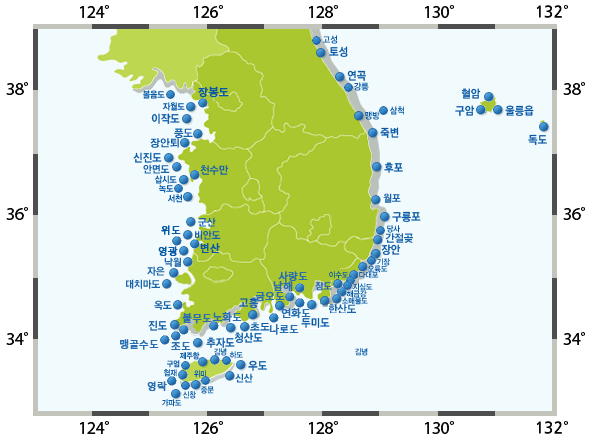




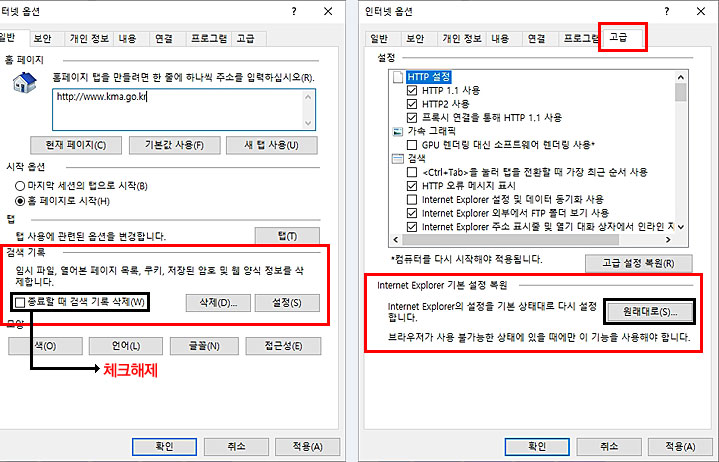


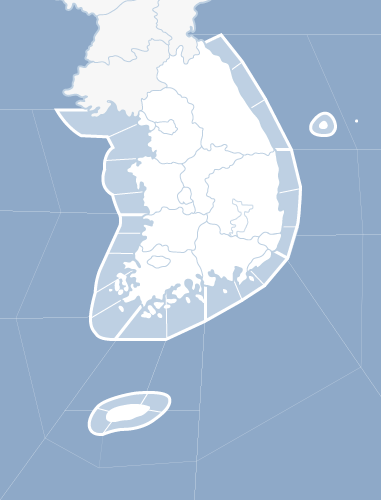
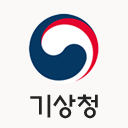
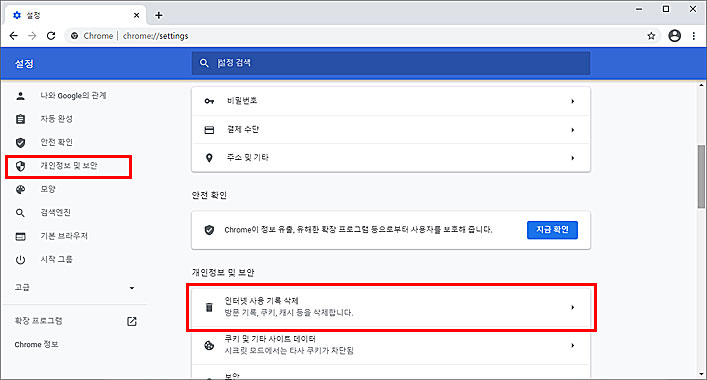
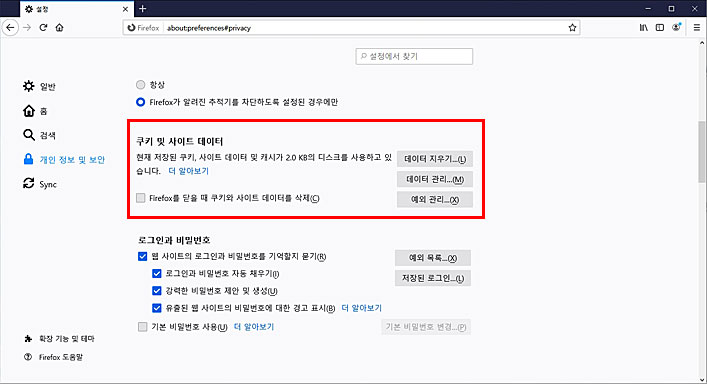






Article link: 기상청 날씨 누리집.
주제에 대해 자세히 알아보기 기상청 날씨 누리집.
- 기상청 날씨누리: 홈
- 현재 날씨 – 기상청 날씨누리
- 단기예보 – 기상청 날씨누리
- 지수안내 – 생활기상지수 – 테마날씨 – 기상청 날씨누리
- 서울·인천·경기 – 단기예보 – 기상청 날씨누리
- 기상청 누리집, 날씨정보 찾기 쉬워진다 – 대한민국 정책브리핑
- 기상청 날씨알리미 – Google Play 앱
- 오늘/내일/모레 대기정보 – 에어코리아
- 기상청
- 농업기상정보 – 농촌진흥청
더보기: future-user.com/wki